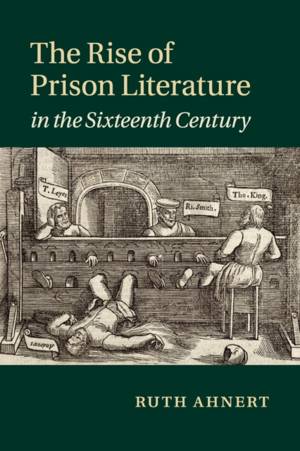
- Afhalen na 1 uur in een winkel met voorraad
- Gratis thuislevering in België vanaf € 30
- Ruim aanbod met 7 miljoen producten
- Afhalen na 1 uur in een winkel met voorraad
- Gratis thuislevering in België vanaf € 30
- Ruim aanbod met 7 miljoen producten
Zoeken
€ 60,95
+ 121 punten
Uitvoering
Omschrijving
Examining works by some of the most famous prisoners from the early modern period including Thomas More, Lady Jane Grey and Thomas Wyatt, Ruth Ahnert presents the first major study of prison literature dating from this era. She argues that the English Reformation established the prison as an influential literary sphere. In the previous centuries we find only isolated examples of prison writings, but the religious and political instability of the Tudor reigns provided the conditions for the practice to thrive. This book shows the wide variety of genres that prisoners wrote, and it explores the subtle tricks they employed in order to appropriate the site of the prison for their own agendas. Ahnert charts the spreading influence of such works beyond the prison cell, tracing the textual communities they constructed, and the ways in which writings were smuggled out of prison and then disseminated through script and print.
Specificaties
Betrokkenen
- Auteur(s):
- Uitgeverij:
Inhoud
- Aantal bladzijden:
- 232
- Taal:
- Engels
Eigenschappen
- Productcode (EAN):
- 9781108438797
- Verschijningsdatum:
- 26/10/2017
- Uitvoering:
- Paperback
- Formaat:
- Trade paperback (VS)
- Afmetingen:
- 152 mm x 229 mm
- Gewicht:
- 317 g

Alleen bij Standaard Boekhandel
+ 121 punten op je klantenkaart van Standaard Boekhandel
Beoordelingen
We publiceren alleen reviews die voldoen aan de voorwaarden voor reviews. Bekijk onze voorwaarden voor reviews.











